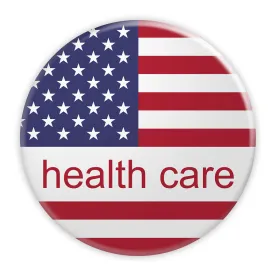President Biden issued Executive Order 13985, Advancing Racial Equity and Support for Underserved Communities Through the Federal Government (Executive Order) on inauguration day in 2021, signalizing the Administration’s intent to advance health care equity and racial justice in the United States by minimizing the influence of the social determinants of health. The Executive Order mobilized 90 federal agencies and 50 independent agencies to evaluate and implement action plans to reduce systemic barriers to access.[1] On April 14, 2022, the U.S. Department of Health and Human Services (HHS), published the HHS Equity Action Plan (Action Plan).
The Action Plan summarized HHS’s early accomplishments implementing the Executive Order and identified additional initiatives related to health equity, such as the Office of Climate Change and Health Equity, equity impact assessments for the legislative process, and the CMS Office of Minority Health’s Health Equity Inventory. The Action Plan identified five types of barriers for equitable outcomes and specified concrete steps to mitigate those barriers along with medium term (2-4 years) and long-term (5-8 years) progress measures. The five barriers are:
-
Nondiscrimination in HHS: Civil Rights Protections and Language Access—This area focuses on increasing meaningful access to Medicare, Medicaid, and other federally assisted programs for Limited English proficiency. HHS will implement a Language Access Plan overseen by the Office of Civil Rights. The goal is to develop and implement a continuous quality improvement process that identifies best practices, remedies LEP complaints against HHS, and fosters an HHS-wide “culture change that prioritized equity in the delivery of HHS conducted and funded programs . . . .”
-
Acquisitions—HHS identified systemic barriers for underserved communities and their members when applying for contracting opportunities, such as short timelines, lack of transparency on available opportunities, and lack of adequate access to capital to establish business development capabilities. To address this, HHS will provide training and outreach for small disadvantaged businesses. HHS also will centralize a procurement forecasting system to streamline access to opportunities so small disadvantaged business are informed about opportunities early and have time to develop proposals.
-
Grants—HHS determined that there is a lack of diversity in grant applicants and awardees. This is caused by “overly burdensome provisions in the Notices of Funding Opportunity (NOFOs),” unclear NOFOs, and a lack of technical assistance for applicants. HHS is implementing recommended changes to provide more technical assistance and clearer language.
-
Capacity Building—HHS identified a known unknown: lack of sufficient data and equity assessment capacity to identify and address inequities. To remedy this, each operating division within HHS will conduct an equity assessment. An Equity Technical Assistance Center will develop resources to assist with the equity assessments and address their findings.
-
Maternal Health—Evidence shows that African American, Native American, and Alaskan Native women suffer higher rates of maternal mortality. Likewise, underserved communities receive lower rates of postpartum care. HHS is working to expand postpartum care via CHIP and Medicaid and identifying ways to improve such care. For example, HHS is encouraging states to adopt the state plan option offered under the American Rescue Plan (which would provide individuals with 12 months of postpartum coverage, rather than the required 60-day coverage period postpartum).
On April 20, 2022, CMS announced its strategy to advance health equity, which is intended to engage all CMS Centers and Offices to identify its current health equity status and “respond to inequities in health outcomes, barriers to coverage, and access to care.”[2] This includes collaborating with health care facilities, providers, insurers, pharmaceutical companies, individuals experiencing health inequity, researchers, and other stakeholders to further its mission, while also encouraging health care leaders to advance health equity.
Bolstering its position on advancing health equity and reducing maternal mortality, CMS issued a proposed rule for inpatient and long-term hospitals. The following proposals are intended to address health equity:
-
The following health equity measures are included in the proposed rule: assessment of a hospital’s commitment to advancing health equity and delivering more equitable health care, and identifying patient health-related social needs (e.g., transportation needs, food insecurity, housing instability, etc.) so that hospital’s can appropriately respond and treat patients more holistically.
-
Stakeholder input on social determinants of health, especially as they relate to homelessness.
-
A “Birthing-Friendly” hospital designation and additional quality measure reporting to improve maternal health outcomes. Such actions are intended to incentivize hospitals to advance health equity as it relates to maternal health since consumers would be empowered to choose hospitals that demonstrate a commitment to health care quality, equity, and safety for pregnant and postpartum patients. It is anticipated that data will first be submitted by hospitals in May 2022 (for publication by CMS in fall 2022 for data points during October 2021-December 2021), and that the “Birthing-Friendly” hospital designation will be available beginning in fall 2023 (the criteria for which will be further developed).[3]
HHS and its components, including CMS, will continuously reevaluate its policies, programs, and processes to advance health equity for the duration of the Biden Administration, and on an indefinite basis if the Executive Order is not superseded by subsequent Executive Order(s) in a subsequent Administration. Thus, stakeholders should remain vigilant to ensure that their standards align with any laws, regulations, or guidelines promulgated by the government. The Administration’s new proposed rulemaking on ACA Section 1557 is expected to be published in the coming months. That rulemaking likely will address language access requirements and broaden the reach of Section 1557’s nondiscrimination requirements as part of the Administration’s health equity efforts.
FOOTNOTES
[1] Advancing Equity and Racial Justice Through the Federal Government | The White House
[3] CMS Proposes Policies to Advance Health Equity and Maternal Health, Support Hospitals | CMS



 />i
/>i
